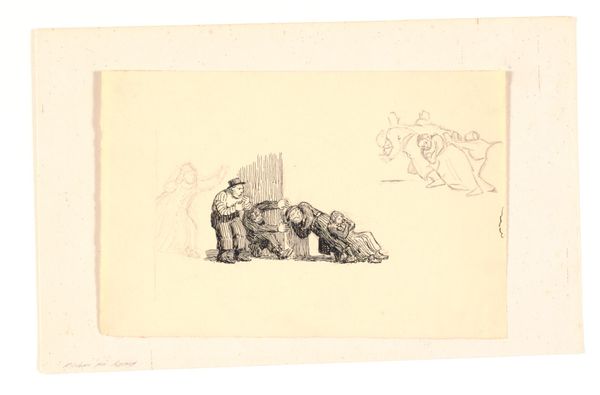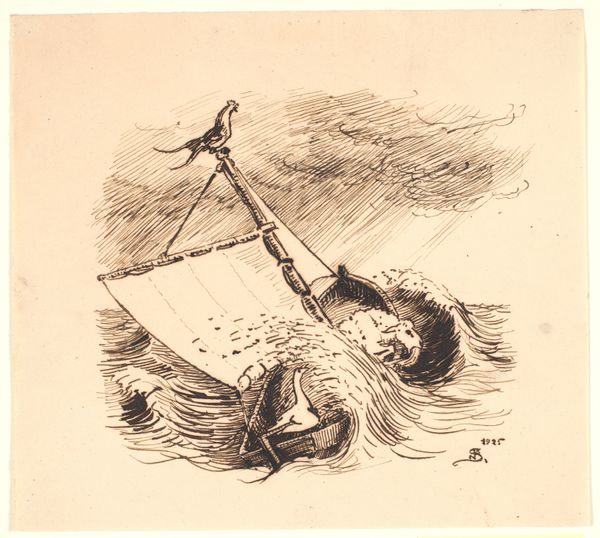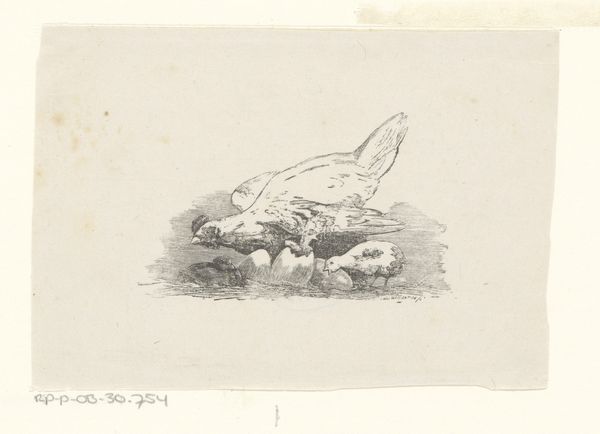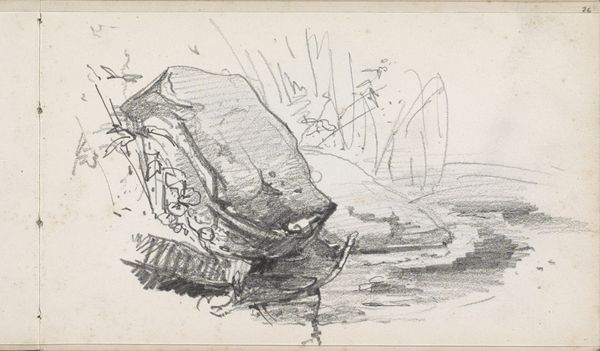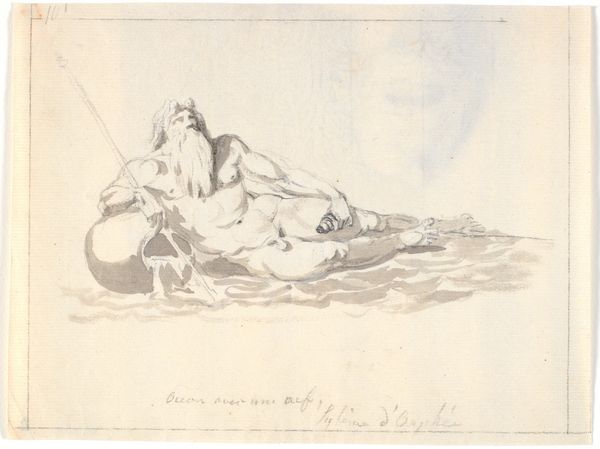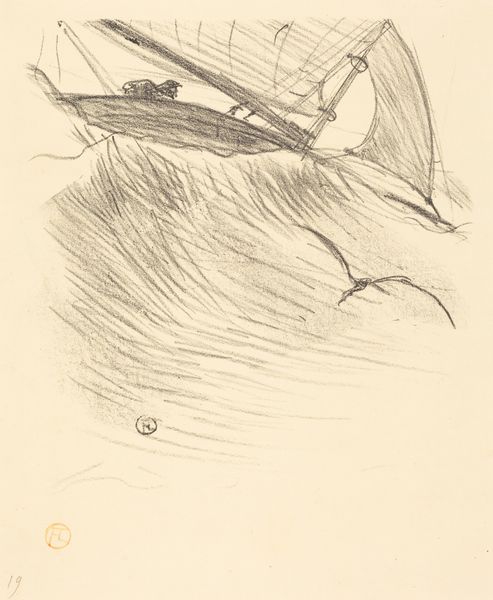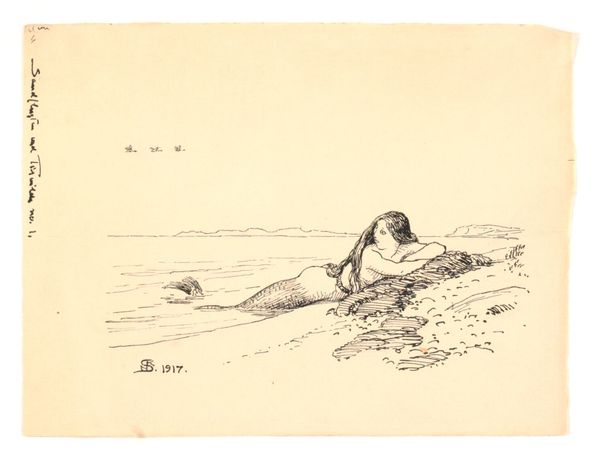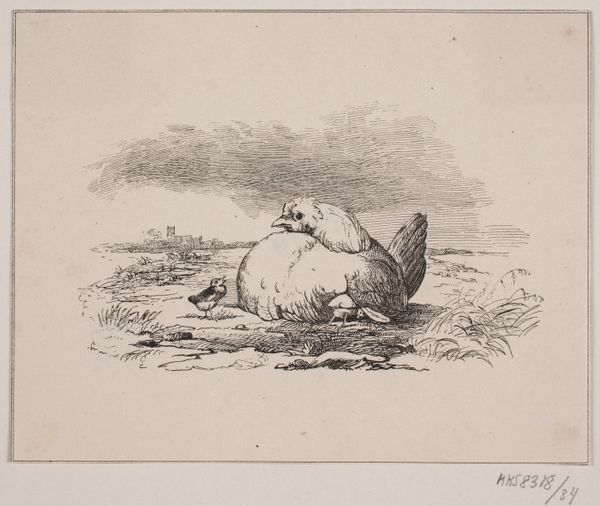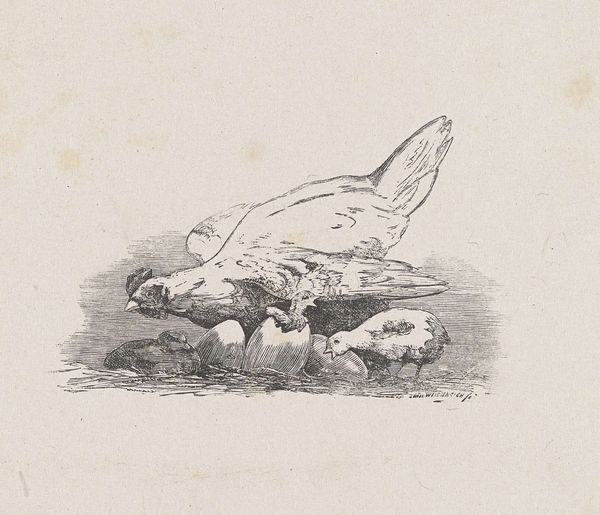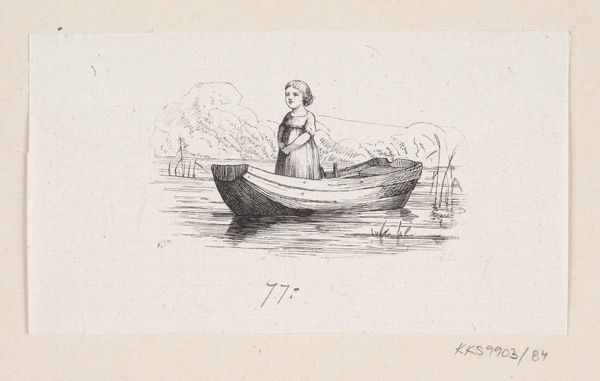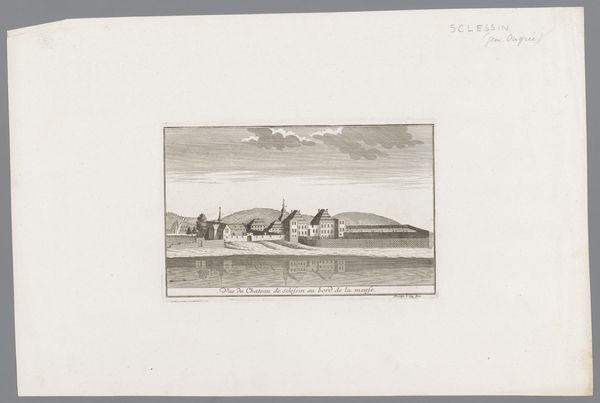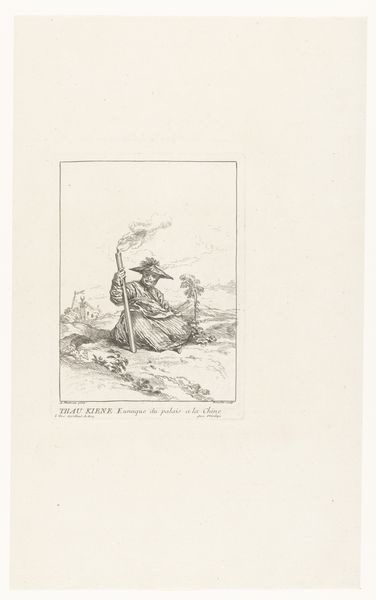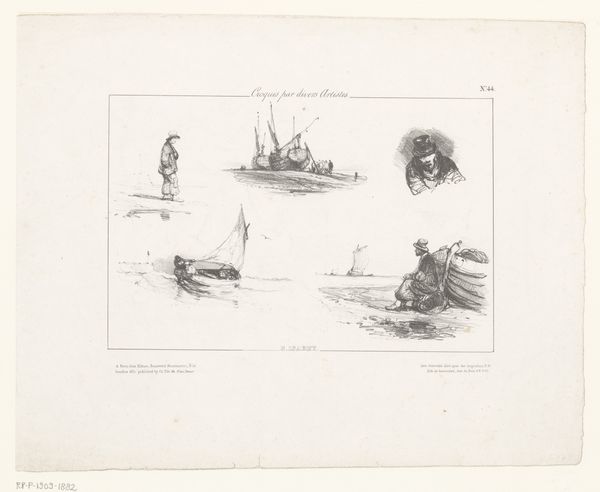
drawing, paper, ink
#
drawing
#
landscape
#
paper
#
ink
#
line
#
modernism
Dimensions: 147 mm (height) x 226 mm (width) (bladmaal)
Curator: What strikes me immediately is how much we learn from Skovgaard's focus on line and its application on the page. It tells a story about illustration as both an art form and labor for artists at the time. Editor: I see Niels Skovgaard’s "Illustration til Dyrenes Sørejse samt blyantsrids" from 1925, rendered in ink and pencil on paper. There’s a small boat battling choppy waves. What can you tell me about it? Curator: Think about what "illustration" implied in 1925. This was work. Skovgaard wasn's simply creating “art,” he was producing a product within the social and economic context of the book trade, a system of material distribution. So, let's examine the visible layers. The visible, perhaps hurried, marks suggest a printing process. How do the rapid lines hint at Skovgaard's labour? Editor: It feels like he's capturing a scene quickly, like a journalist might sketch at the scene of an event, and the limited medium suggests perhaps it’s intended for quick reproduction? Curator: Exactly! We should also note that this wasn't intended as high art, so that opens questions. Was Skovgaard elevating a simple medium to something powerful? How might the accessibility of the medium of pen, ink, and readily available paper democratize art for both the creator and the consumer? Editor: So it's more about the artistic process and the materials available at the time that tell the story, and perhaps challenge this separation between fine art and craft. Curator: Precisely. It pushes us to think about the conditions of artistic creation and the artist's role in a broader social framework. Editor: This really highlights the material realities behind creating images for mass consumption and also how labor and cost shape our view of art! Curator: It certainly does. Seeing the artwork through the lens of its production gives you a fascinating new insight.
Comments
No comments
Be the first to comment and join the conversation on the ultimate creative platform.
